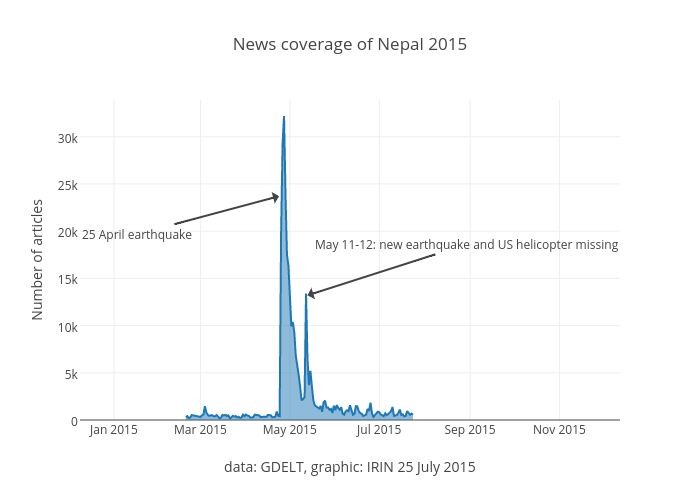Aid groups and major news agencies are marking the three-month anniversary of the Nepal earthquake with a flurry of retrospectives and reminders that the "emergency is not over".
As international emergency funding remains relatively weak, IRIN teamed up with GDELT to try and estimate how much international attention has moved on. The answer is not surprising, but striking both in its speed and the uniformity between media around the world, with the exception of course of Nepal and its neighbours. (More detailed analysis is available on the GDELT blog). By thirty days after the earthquake, media coverage had faded away almost to pre-earthquake levels, with the exception of a notable blip when a new earthquake and a missing US helicopter briefly reignited the level of attention. Without that, the drop-off in attention would be in days, not weeks.
We also looked, as we did immediately after the earthquake, at which media mentioned Mount Everest in their coverage - with the suggestion that the landmark and its foreign climbers might be getting disproportionate coverage compared to the local population.
Now, GDELT has provided an analysis of over 300,000 news articles mentioning Nepal to look at this Everest factor, as well as the fatigue described above.
Read more at the GDELT blog: http://blog.gdeltproject.org


